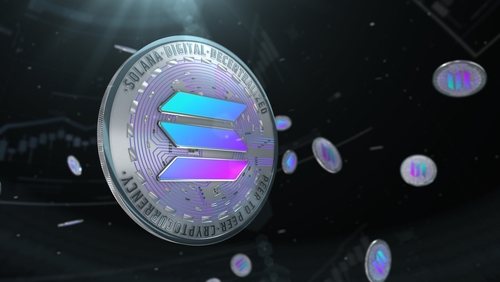
-
USSD is the first over-collateralized decentralized stablecoin, with guaranteed minimum collateral ratio of 130%.
-
The current collateral ratio is over 200% with nearly $1.4 billion worth of assets in the Tron DAO reserve account.
TRON-based decentralized stablecoin USDD has hit another milestone as it becomes the first overcollateralized decentralized stablecoin (OCDS) in the crypto industry.
A month since its launch on 5 May, USDD has experienced great organic growth as part of its Stablecoin 3.0 development, and this latest upgrade brings to users not only fast transactions, but also the highest collateral ratio within the market.
This follows an upgrade that allows TRON DAO Reserve members to both mint USDD by burning TRX as well as consolidate the stablecoin’s stability and credibility via a mechanism that makes it possible to over-collateralize assets in the TRON DAO Reserve (TDR).
200% over-collateralized, nearly $1.4 billion in assets
Over-collateralized assets include Bitcoin (BTC), Tron (TRX), and top stablecoins such as Tether (USDT), USD Coin (USDC), TrueUSD (TUSD) and USDJ.
According to data on the Tron blockchain explorer TRONSCAN, USDD’s total circulating supply currently is just above 667 million. The guaranteed minimum collateral ratio for the tokens is at least 130%, putting it above the 120% for the DAI.
The 130% minimum ratio means that every USDD token is backed by $1.3 worth of the above assets. Currently, the ratio is at over 200%, with more than $1.37 billion worth of different assets backing the USDD.
The reserve account holds 10,500 BTC, 240 million USDT, and 1.9 billion TRX. Other than that, a total of 8.29 billion TRX have been sent to the burning contract.
The public can access the real-time collateral ratio for the stablecoin 24/7 on the TRON DAO Reserve’s website.
USDD growth after TerraUSD collapse
USDD is quickly gaining ground as the leading decentralized stablecoin, with circulation on the TRON network, Ethereum, and BNB Chain. The stablecoin is also used across several platforms including exchanges Poloniex, KuCoin, Huobi Global and Bybit.
It’s also available on SUN.io, PancakeSwap, Uniswap, and Curve among decentralized finance (DeFi) platforms.
However, the market’s confidence in algorithmic stablecoins wavered following the dramatic collapse of TerraUSD (USD). The stablecoin, which was backed by over 80,000 BTC among other assets, tanked and crashed the LUNA price along with it.
But TRON founder Justin Sun says USDD is designed to be better than UST and that it is “spearheading the Stablecoin 3.0 era.” According to him, the upgrade adds features that underpin the stablecoin’s stability.
He added”
“The $10 billion reserves pledged by the TDR will enable USDD to become the most reliable decentralized stablecoin with the highest collateral ratio in blockchain history. Currently, the 200%+ collateral ratio offers USDD a very strong safety net.”
The post TRON upgrades USDD in the aftermath of TerraUSD collapse appeared first on CoinJournal.





